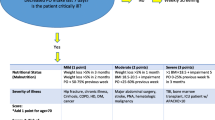Abstract
Breath tests (BT) using stable isotopically labelled substrates seem to fullfil all the demands and desires for a non-invasive investigation. There are no radiation hazards, substrates are given in tracer amounts perorally, breath and urine samples can be collected easily, and tests can be done repeatedly, thus easily allowing the monitoring of function with time. There are, however, some disadvantages. Any BT has the same assumption: after intake of the 13C tracer the substrate is metabolized to 13CO2. An increase of 13CO2 above baseline levels is said to reflect the function investigated – in 13C sucrose studies, the amount of carbohydrate absorbed; in 13C aminopyrine BT, the liver function; in 13C glucose BT in a diabetic child, the impaired handling of glucose. However, as only the end product 13CO2 is measured, there is no information on all the pools and fluxes the labelled substrate and its metabolites have to pass. At least in inborn errors of metabolism, probably in any disease, one has to assume that these fluxes and pools are substantially changed. Therefore all calculations are weak and finally one has to resort to invasive methods, i.e. drawing blood to measure pools and fluxes to allow a correct interpretation of the BT data. Furthermore, changes in the basal exhalation of 13CO2 during the test will have an impact on the BT calculation. Another problem is that for an exact calculation, the basal metabolic rate (BMR) and the actual endogenous CO2 production in the patient is needed, which in most instances is unknown. It is not easy to maintain a stable endogenous CO2 production, particularly in younger children who will not rest or in neonates and toddlers who may fight against taking breath samples. Taking together these limitations are the reason why BT have not been able to reach the level of routine clinical methods, especially in the diagnostic work up of impaired liver function or inborn errors of metabolism.
Similar content being viewed by others
Author information
Authors and Affiliations
Rights and permissions
About this article
Cite this article
Rating, D., Langhans, C. Breath tests: concepts, applications and limitations. Eur J Pediatr 156 (Suppl 1), S18–S23 (1997). https://doi.org/10.1007/PL00014264
Issue Date:
DOI: https://doi.org/10.1007/PL00014264




